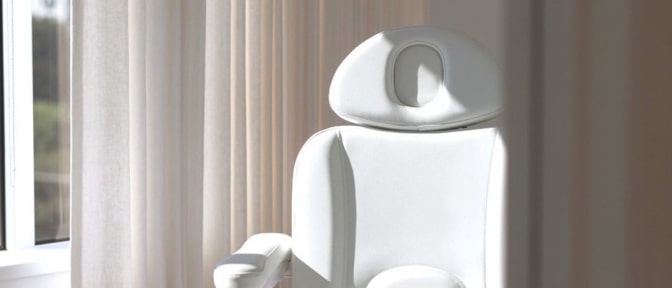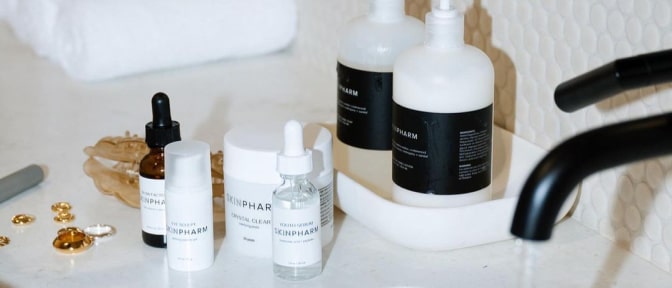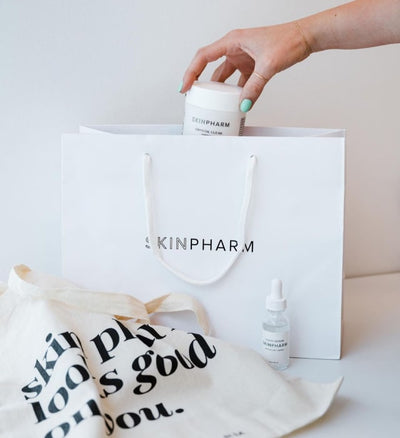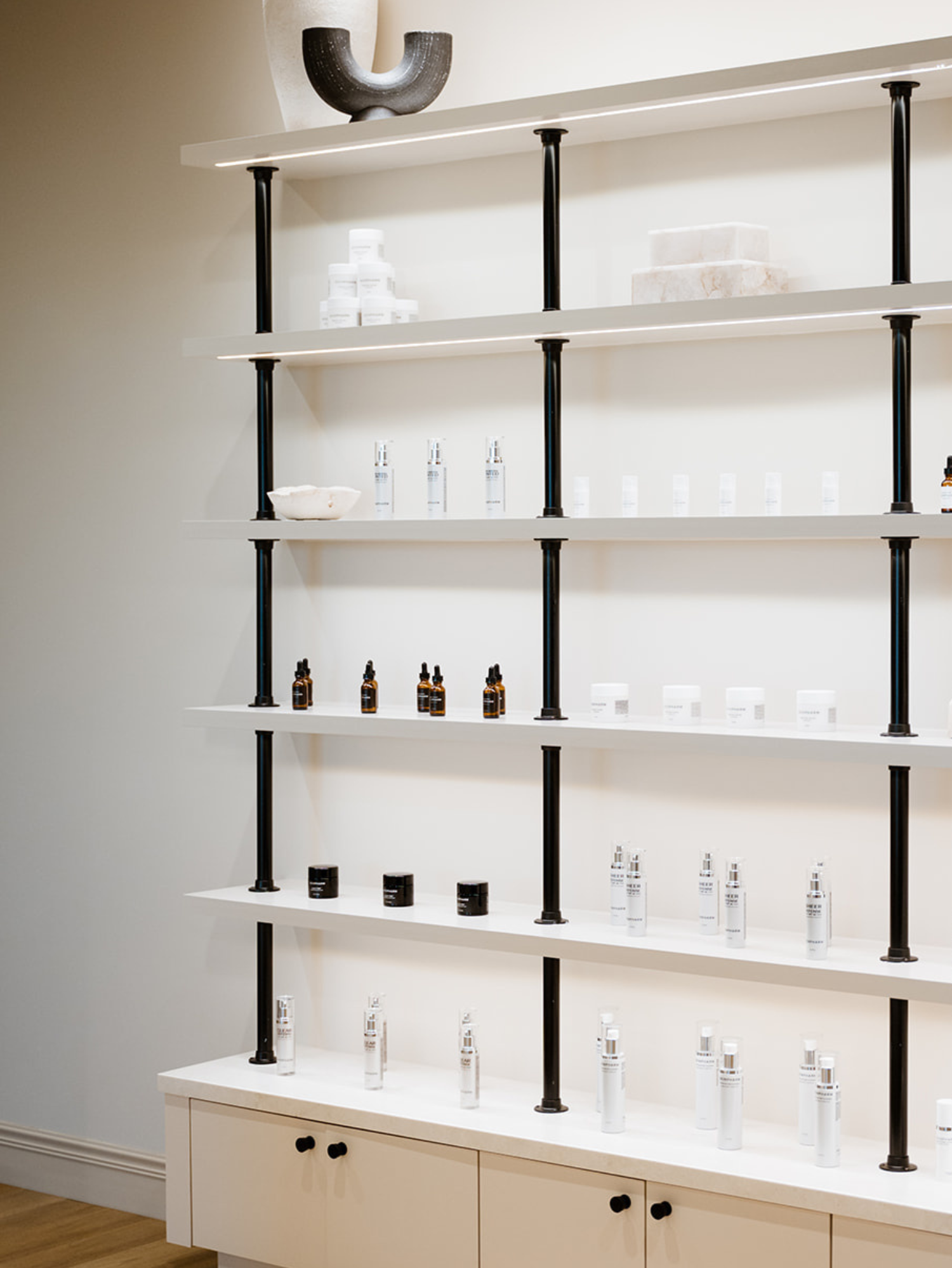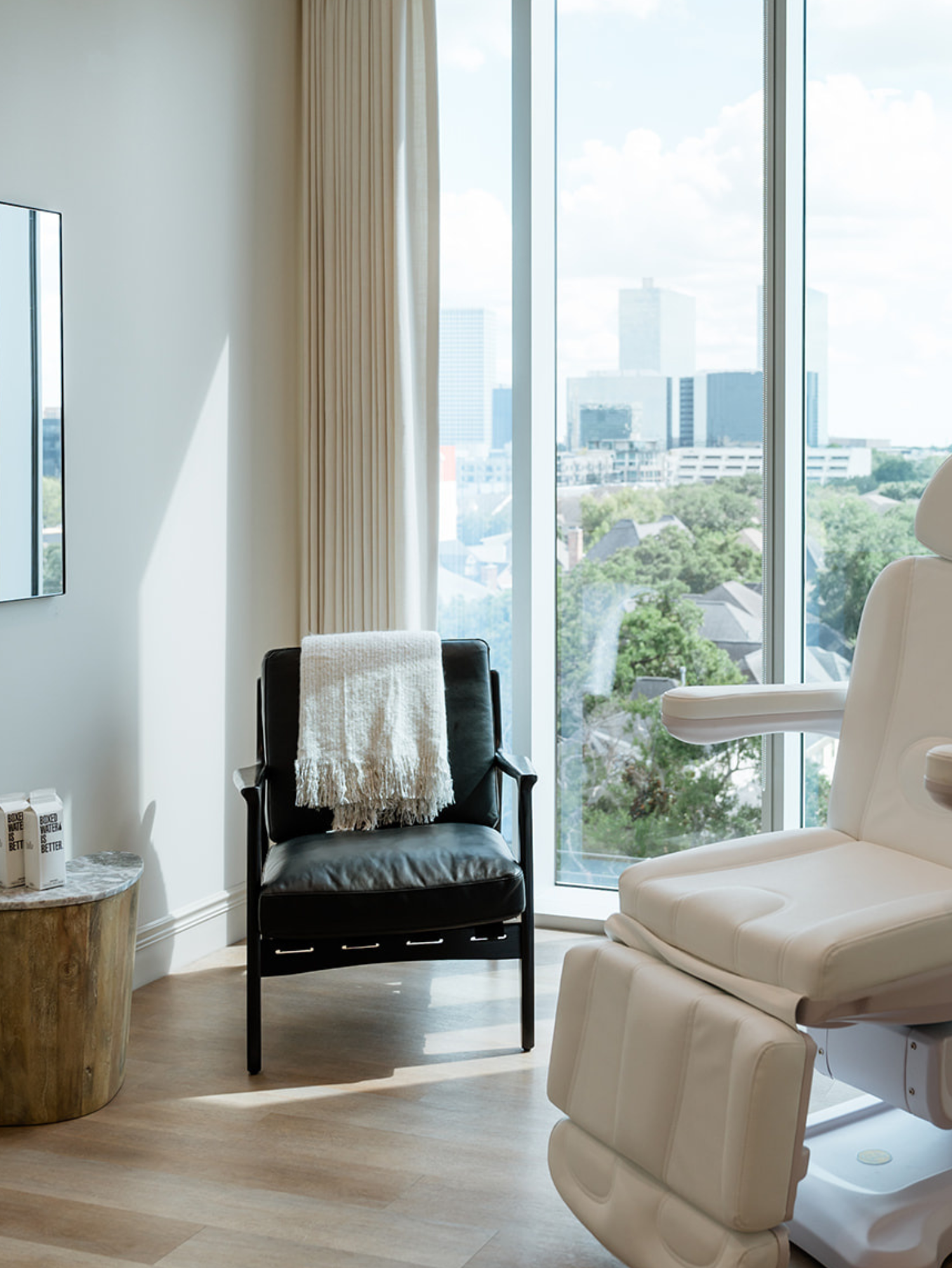Shop skin care
Clinics
VISIT OUR 9 CLINICS →
HOURS
Monday – Friday
9:30a – 5:30p
Postpartum Skin Care Guide: Everything You Need to Know

First and foremost — congratulations, mama!
We love treating new moms at Skin Pharm. What comes next for your skin after you’ve had a baby? Do the same skin care rules and routines apply? Good news — our skin care line and menu of treatments caters to new mamas, too!
We’re here to talk all things postpartum skin care. Because now, more than ever, we want you to feel your best!
Is your skin really that different postpartum?
Do we need different postpartum skin care? Is the skin really that different?
It helps if you remember that your skin truly is the body’s largest organ. During pregnancy, your skin works hard to accommodate all of the extra demands, just like the rest of your organs. In the skin’s case, it stretches an incredible amount to make room for all of the changes to the body the baby requires — not just in the belly, but everywhere else, too.
The skin undergoes various significant changes to accommodate, each working together from a slightly different angle. These changes include hormonal shifts, changes to your blood flow and glandular changes. You may even notice that your pre-existing skin care concerns, such as breakouts or oily skin, worsen or temporarily improve during pregnancy.
And then once you’ve had your baby, your body makes certain changes to compensate. That process can take time, and your skin may seem to go from one extreme to another before landing on its new normal. This is why postpartum skin care is so crucial — because the products and ingredients that worked while you were pregnant may no longer be quite as effective.
Although it may depend on who you ask, most medical professionals consider the postpartum period to last about seven to eight months.
Common skin complaints in the postpartum period
While everyone’s body is unique, and the time frame it takes your body to readjust to no longer being pregnant may vary, there are a few common skin complaints that many people report postpartum.
POSTPARTUM BREAKOUTS—
After giving birth, certain hormones (like estrogen and progesterone) in the body decrease. This decrease occurs over a short period of time, leaving your skin in a state of flux — especially after your skin has adjusted to constant shifts in hormones throughout the past nine months.
Without those hormones, it may struggle to know what to do.
Unfortunately, for many people, hormonal changes trigger breakouts. The same can happen as your hormones try to establish a new balance when you're postpartum. Expect this to take between six to eight weeks, during which time you’ll likely see an increase in blemishes as your skin adjusts.
In addition, stress can also worsen breakouts, and having a new baby in the house — while wonderful and exciting — can certainly be a source of stress, too.
DRY SKIN POSTPARTUM—
After having a baby, another common problem people notice is that their skin seems to be more dry than usual. Dry skin postpartum can also be tied to the change in hormones and increased demands on your body’s water supply if you’re breastfeeding.
Your skin is also working hard to bounce back to the way it was pre-pregnancy, which takes work. Those factors can lead to dry, sometimes flaky, itchy or uncomfortable skin — on your face and all over your body, as well.
OILY SKIN POSTPARTUM—
The same hormonal changes that can lead to increased postpartum breakouts can also trigger oily skin.
Why’s that? The natural oils that help keep your skin supple and flexible during pregnancy are still being produced for the first few weeks after birth while your hormones slowly get back to normal.
What are some effective postpartum skin care tips?
Struggling with postpartum skin care? We’ve got you — there are all kinds of ways to manage your skin postpartum.
HOW TO DEAL WITH POSTPARTUM BREAKOUTS—
One of the main factors in postpartum skin care (especially when managing breakouts) is whether you’re breastfeeding or not. If you aren’t, your only concern is what works well for your skin. However, if you are breastfeeding, there are a few additional factors to consider.
While most skin care products are considered safe, some ingredients may pass through to your baby’s breastmilk. Most of these products are the same ones you’ve been avoiding while pregnant, but it’s worth discussing with your provider before returning to the skin care routine you used before you were pregnant.
Products generally considered safe while breastfeeding includes azelaic acid (a derivative found in Youth Serum and Glow Factor), salicylic acid (found in Papaya Enzyme Cleanser, Crystal Clear clarifying pads and Clay Time) and any oral antibiotics prescribed by your provider.
TREATING POSTPARTUM SKIN DRYNESS—
If you’ve noticed that your skin is much drier than usual or you’re experiencing itchy, flaky skin, the most important thing you can do is moisturize. (After cleansing with lukewarm water and applying your serums, of course!)
Water that is too hot can make your skin even drier, and harsh cleansers (especially those with exfoliants or added fragrances) can strip your skin of its natural, protective oils. Many new moms use cleanser only once a day (usually before bed) and stick with just water in the morning. Follow up with a gentle, supportive moisturizer like Youth Serum or Face Whip to lock in moisture.
Don’t forget the rest of your skin, either! Postpartum skin care doesn’t stop at your face, especially when moisturizing and hydrating the skin. Be sure to drink plenty of water (especially if you’re breastfeeding), avoid showering with water that’s too hot and always bring your skin care down you neck and décolletage.
DEALING WITH OILY POSTPARTUM SKIN—
Oily skin not only increases your risk of breaking out, but it can also make you feel self-conscious. If you’re looking for ways to take that oil down a notch, prioritize a good cleanser and consider Crystal Clear clarifying pads, too.
In addition, it’s crucial to pay attention to the ingredients in any cosmetics or moisturizing products that you use. Look for products labeled “oil-free” or “non-comedogenic,” which means they will not add increased oil to your skin or clog your pores.
However, don’t listen to anyone that tells you that you don’t need to moisturize your face when your skin is oily — oily skin is often just a cry for help, and your skin needs just as much hydration as other skin types.
Try to stay out of the sun
There’s one other factor to consider when it comes to postpartum skin care — the sun. Your skin is working hard to regulate itself postpartum, and the last thing it needs is to heal itself from sunburn.
In general, a quality, protective sunscreen should have an SPF of at least 30, protect against UVA and UVB rays (known as “broad-spectrum” protection) and be water-resistant.
When you’re pregnant and postpartum, you’ll also need to look for options formulated without oxybenzone or benzophenone-3. (Skin Pharm’s sunscreens fit the bill!)
To wrap things up...
The postpartum period can be a trying time for any new mama. We’re here to help navigate post-pregnancy skin care — because now, more than ever, we want you feeling your very best.
SOURCES:
Postpartum period: three distinct but continuous phases | PMC
Treatment of acne vulgaris during pregnancy and lactation | PMC
